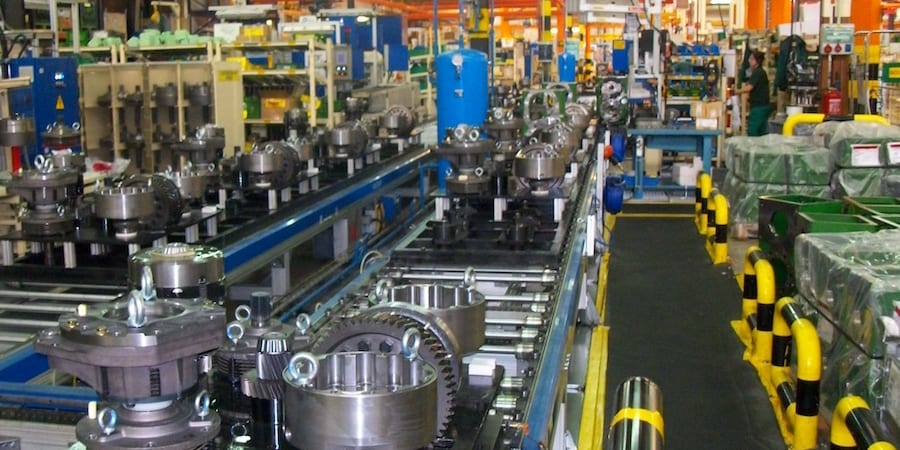
How John Deere Iberica is developing a lean supply chain
INTERVIEW – For the past year, agricultural equipment manufacturer John Deere Ibérica has worked to develop a lean supply chain. We met with them in Madrid to understand how they’re going about it.
Interviewee: Ángel Sanz Fernández, Gears and Shafts OFP Buyer, John Deere Iberica
Planet Lean: Tell us about John Deere’s activities here in Spain.
Ángel Sanz Fernández: Here in Spain John Deere has a factory dedicated to the design, production and validation of components, in particular transmissions, tractor hitches and final drives. Everything we produce is exported to other John Deere plants around the world, from the United States to Germany and Brazil. We also have a sales branch looking after final customers. In total we employ around 1,000 people here in Spain.
PL: When did you start implementing lean thinking and practices?
ASF: When I joined the business five years ago, they were already applying lean in the workshop. Our continuous improvement team has been at it for a while, and over time the depth of our lean work has increased remarkably: at first the focus was on stabilizing the process, which then allowed to start digging deeper and gradually develop a continuous improvement mindset in our organization.
Everything in the factory is run using a lean system, from production to logistics. However, we all know that no transformation is complete without tackling the supply chain, which been our focus in the last years. To John Deere developing a leaner supply chain means two things: on the one hand, developing suppliers together with the Quality Department using lean tools and principles (to convince them to work using the same system we use); on the other hand, applying lean to our own purchasing processes.
PL: How did you approach supplier development?
ASF: Our aim is to help our suppliers to bring consistency to the quality of their products and to establish their own quality assurance system. Our starting point was assessing where our suppliers are, using an audit system we developed, which for each supplier generates a scoring and a plan for improvement.
Each supplier is different: some are big companies with a system in place that is capable of absorbing lean ideas, while others are small businesses that have been working in the same way for decades. Convincing them is the hardest part.
We know that lean can’t be imposed, and that suppliers need to see its value for themselves. This doesn’t mean, however, that we don’t try to incentivize them: to obtain a certain score, for example, you need to show that you are using certain lean tools, like 5S. While we know that tools alone are unlikely to transform our suppliers, we found that including them in the audit requirements is a good way to get them started on the path towards lean thinking: as they see the first results come in, they convince themselves of the benefits that the methodology can bring. The customized improvement plan, which is absolutely critical to us, does the rest.
PL: What about Purchasing?
ASF: In Purchasing we are in the process of understanding the work. Before we started out lean experiments, every buyer had its own strategy and approach to purchasing, whereas now everybody responds to offers in the same way. We have started to actively look for root causes and solutions every day, using lean thinking as a way to flag up the problems that we thought would never be solved and start tackling them.
PL: What benefits have you noticed since starting your work with lean?
ASF: As far as supplier development goes, an obvious benefit is the fact that, because the John Deere assessment is the same worldwide, our colleagues in other countries can rest assured that what they will get from a supplier is of the right quality – no matter where that supplier may be located.
We are also observing a ripple effect: as results start to appear, more and more people in our supplying companies want to know what lean is all about, which over time creates a virtuous cycle of improvement. Our projects are helping our suppliers see very fast that lean works. In concrete terms, our lean work on the supply chain has already resulted in a large reduction in the amount of scrap our suppliers produce.
In terms of Purchasing, the most critical benefit we are getting is that our people can now see that we have the ability to improve. In the past, we knew where problems were but we didn’t analyze them to find their root cause.
PL: How did you get people on board?
ASF: At the end of the day, you won’t go anywhere until you generate interest in lean. That’s how it all began for me as well: I simply got curious about it and started investigating. You can’t just walk to the shop floor or a supplierand say, “From now on we are going to use these tools.” You need to make people want to use lean, which is why we focus on showing quick results that will get our employees enthused. Once the interest is there, we can start educating them: in the factory there is information everywhere and the state of the work is immediately visible. In Purchasing, where we introduced lean at a later stage, we are still working to get there. As far as suppliers are concerned, sometimes we find they already have quite a lot of lean expertise, while other times we need to help them to get involved.
It was a priority for top management to create a strong foundation on which we can continue to build our improvements. People are doubtful at first, which is completely understandable, but the value of lean is indisputable once the first results appear and everybody realizes there is a better way to work.
PL: What is the hardest part of trying to encourage suppliers to take on lean?
ASF: Once we manage to “infect” suppliers with the lean virus, they start to improve. As their processes become more stable and their resource utilization more efficient, as buyers we expect to see more quality, more flexibility and, of course, lower costs. This means that we often have to engage in difficult negotiations with them.
PL: What is the biggest change you have witnessed in the business?
ASF: Inefficiency has a strong impact on the work. Before lean became our common language, we used to spend a lot of time fighting fires: there was always an urgent delivery to arrange or a payment to chase. This meant that I – like many other in the organization – had to sacrifice my actual and most important job: looking for opportunities to improve, to make the business more competitive and to develop our suppliers. Today we still have fires at times, but their number is significantly lower than before.
THE INTERVIEWEE

Read more


THE LEAN BAKERY – In this video, a shop coordinator explains how the 365 bakeries were able to speed up service to customers and ensure product quality by reorganizing work and responsibilities.


FEATURE - Mission creep, silos and a disengaged workforce are some of the negative effects of traditional management. Michael Ballé offers an alternative based on the respect for people principle of lean thinking.


FEATURE – What if we ran our production schedule to time instead of quantity? While creating overproduction, running to time is a temporary first step to establish levelled production with fixed repetitive cycles.


CASE STUDY – TechnipFMC has introduced the Concept Paper in its lean product development process. This article shares some of the learnings resulting from the experience.

